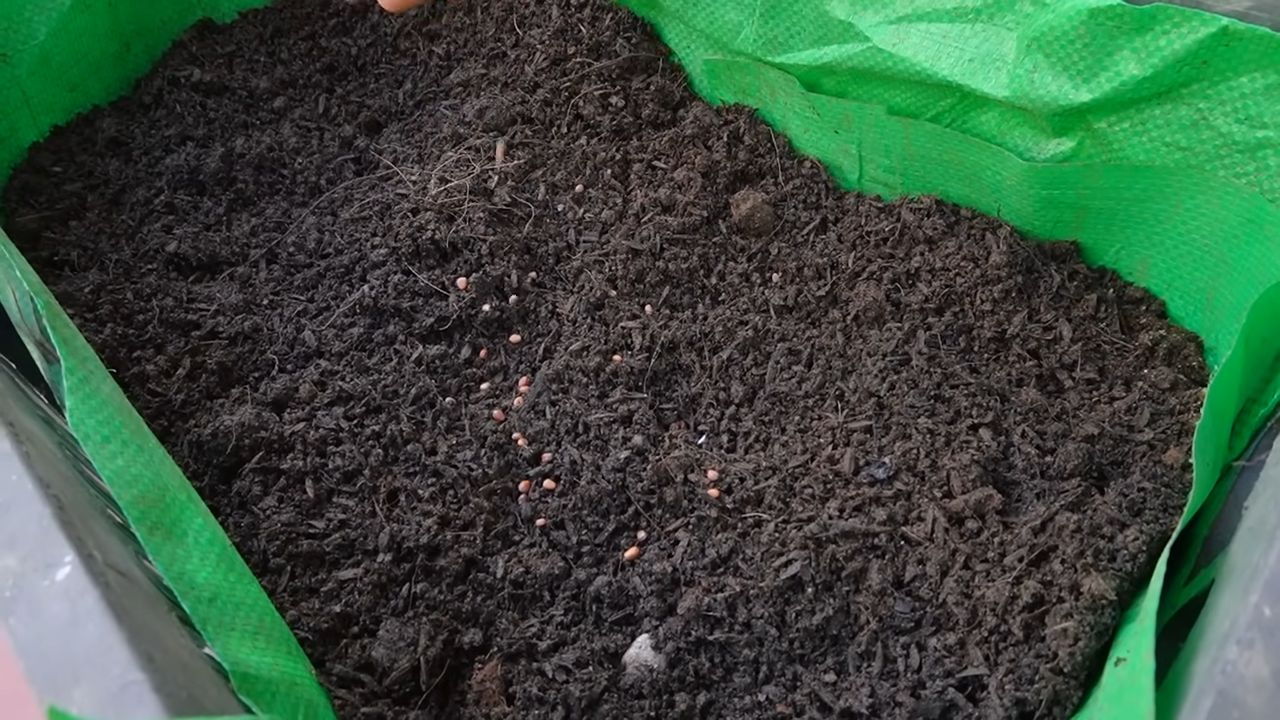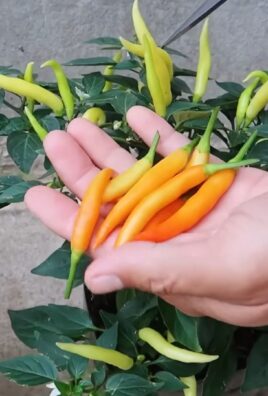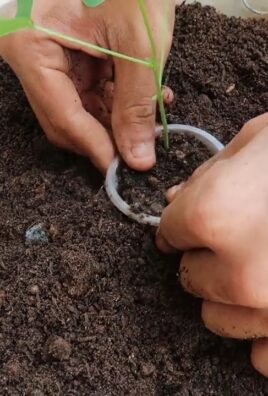Growing radishes at home is easier than you might think, and I’m here to show you how! Forget those bland, store-bought radishes – imagine biting into a crisp, peppery radish you nurtured from seed to harvest, right in your own backyard (or even on your balcony!). This isn’t just about saving a few bucks; it’s about connecting with nature, enjoying fresh, healthy food, and experiencing the satisfaction of growing something yourself.
Radishes have a surprisingly long and fascinating history. They were cultivated in ancient Egypt and Greece, prized for their medicinal properties and culinary versatility. From humble beginnings, they’ve become a staple in cuisines worldwide. But in today’s fast-paced world, many of us have lost touch with the simple pleasure of growing our own food. That’s where these DIY tricks come in!
Why should you bother with these DIY hacks for growing radishes at home? Because let’s face it, gardening can sometimes feel intimidating. Maybe you’ve tried before and failed, or perhaps you think you don’t have the space or time. But these simple, effective techniques will demystify the process and empower you to grow delicious radishes, even if you’re a complete beginner. I’ll share my favorite tips and tricks to ensure you get a bountiful harvest of these zesty little gems. Get ready to unleash your inner gardener!

Growing Radishes: From Seed to Salad in Weeks!
Hey there, fellow gardening enthusiasts! I’m so excited to share my experience with growing radishes at home. They’re one of the easiest and fastest vegetables to cultivate, perfect for beginners and seasoned gardeners alike. Seriously, you can go from seed to salad in just a few weeks! Plus, that peppery bite is just irresistible. Let’s dive into how you can grow your own delicious radishes.
Choosing Your Radish Variety
Before we get our hands dirty, let’s talk about radish varieties. There’s more to radishes than just the classic red globe!
* Cherry Belle: This is your classic, round, bright red radish. It’s quick to mature and has a mild flavor. A great starting point!
* French Breakfast: These are elongated, red radishes with a white tip. They have a milder, more delicate flavor than Cherry Belle.
* Easter Egg: A mix of radishes in different colors – red, pink, purple, and white. Adds a fun visual element to your garden and salads.
* Black Spanish: These are larger, round radishes with black skin and white flesh. They have a stronger, more pungent flavor and take longer to mature.
* Watermelon Radish: This is a showstopper! Green on the outside and bright pink on the inside, resembling a watermelon. It has a mild, slightly sweet flavor.
I personally love growing a mix of Cherry Belle and French Breakfast for their quick growth and mild flavors. But don’t be afraid to experiment and find your favorites!
Preparing the Soil
Radishes are pretty forgiving, but they do appreciate well-drained, loose soil. Here’s how I prepare my radish patch:
* Sunlight: Radishes need at least 6 hours of sunlight per day. Choose a sunny spot in your garden.
* Soil Type: They prefer loamy soil, but will grow in most soils as long as they are well-draining. Heavy clay soil can lead to misshapen radishes.
* Soil Amendment: Amend the soil with compost or well-rotted manure to improve drainage and fertility. I usually add a couple of inches of compost and work it into the top 6-8 inches of soil.
* pH Level: Radishes prefer a soil pH between 6.0 and 7.0. You can test your soil pH with a home testing kit or send a sample to your local agricultural extension office.
* Remove Rocks and Debris: Clear the area of any rocks, roots, or other debris that could hinder root growth.
Planting Radish Seeds
Now for the fun part – planting!
1. Timing is Key: Radishes are a cool-season crop, meaning they thrive in cooler temperatures. I usually plant my first batch in early spring, as soon as the soil can be worked. You can also plant them in late summer for a fall harvest. Avoid planting during the hottest months of summer, as the heat can cause them to bolt (go to seed) and become bitter.
2. Direct Sowing: Radishes are best direct-sown, meaning you plant the seeds directly into the garden. They don’t transplant well.
3. Sowing Depth: Sow the seeds about ½ inch deep and ½ to 1 inch apart. I use my finger to make small furrows in the soil, sprinkle the seeds in, and then gently cover them with soil.
4. Row Spacing: Space rows about 6-8 inches apart.
5. Watering: Gently water the soil after planting. Keep the soil consistently moist but not waterlogged.
6. Succession Planting: To enjoy a continuous harvest of radishes, sow a new batch of seeds every 1-2 weeks. This is called succession planting.
Caring for Your Radishes
Radishes are relatively low-maintenance, but here are a few things to keep in mind:
* Watering: Consistent watering is crucial for radish growth. Keep the soil evenly moist, especially during dry spells. Inconsistent watering can cause the radishes to crack or become tough.
* Thinning: Once the seedlings emerge, thin them to about 1-2 inches apart. This will give the radishes enough space to grow properly. I know it’s hard to pull out those tiny seedlings, but it’s necessary for a good harvest!
* Weeding: Keep the area around your radishes free of weeds. Weeds compete with radishes for water and nutrients. I like to hand-pull weeds regularly.
* Fertilizing: Radishes don’t need a lot of fertilizer. If your soil is poor, you can side-dress them with a balanced fertilizer a few weeks after planting. But be careful not to over-fertilize, as this can lead to excessive foliage growth and small radishes.
* Pest Control: Radishes are generally pest-resistant, but they can be susceptible to flea beetles and root maggots. Flea beetles chew small holes in the leaves. You can control them with insecticidal soap or by covering the plants with row covers. Root maggots are small white larvae that feed on the roots. You can prevent them by rotating your crops and by using row covers.
Harvesting Your Radishes
This is the moment you’ve been waiting for!
1. Harvest Time: Radishes are ready to harvest in as little as 3-4 weeks, depending on the variety. Check the seed packet for specific maturity dates.
2. Signs of Maturity: The tops of the radishes will be visible above the soil. Gently brush away some soil to check the size of the radish. They should be about 1 inch in diameter for most varieties.
3. Harvesting Technique: Gently pull the radishes from the soil. If the soil is dry, you may need to loosen it with a garden fork first.
4. Don’t Delay: Harvest radishes promptly when they are mature. If left in the ground too long, they can become woody and bitter.
5. Storage: Remove the greens from the radishes and store them separately in the refrigerator. The radishes will keep for about a week in a plastic bag. The greens are best used fresh.
Troubleshooting Common Radish Problems
Even with the best care, you might encounter a few problems. Here’s how I deal with them:
* Radishes are too small: This could be due to overcrowding, poor soil, or lack of sunlight. Thin the seedlings, amend the soil with compost, and make sure they are getting enough sunlight.
* Radishes are cracked: This is usually caused by inconsistent watering. Keep the soil evenly moist.
* Radishes are woody or bitter: This can be caused by hot weather, over-maturity, or poor soil. Plant radishes in the cool season, harvest them promptly, and amend the soil with compost.
* Radishes are all tops and no roots: This can be caused by over-fertilizing with nitrogen. Use a balanced fertilizer or avoid fertilizing altogether.
Creative Ways to Enjoy Your Radish Harvest
Okay, so you’ve got a beautiful bunch of radishes. Now what? Here are some of my favorite ways to enjoy them:
* Raw: Simply wash and slice the radishes and enjoy them raw in salads, sandwiches, or as a snack.
* Roasted: Roasting radishes mellows their flavor and brings out their sweetness. Toss them with olive oil, salt, and pepper and roast them at 400°F (200°C) for 20-25 minutes.
* Pickled: Pickled radishes are a tangy and crunchy addition to tacos, sandwiches, and salads.
* Radish Greens: Don’t throw away the greens! They are edible and nutritious. Use them in salads, soups, or stir-fries. They have a peppery flavor similar to arugula.
* Radish Butter: Mix softened butter with finely chopped radishes, chives, and a pinch of salt. Spread on bread or crackers.
Radish Recipes to Try
Here are a couple of my go-to radish recipes:
Radish and Cucumber Salad
This is a refreshing and simple salad that’s perfect for summer.
Ingredients:
* 1 bunch radishes, thinly sliced
* 1 cucumber, thinly sliced
* 1/4 cup chopped fresh dill
* 2 tablespoons olive oil
* 1 tablespoon lemon juice
* Salt and pepper to taste
Instructions:
1. Combine the radishes, cucumber, and dill in a bowl.
2. Whisk together the olive oil, lemon juice, salt, and pepper.
3. Pour the dressing over the salad and toss to combine.
4. Serve immediately.
Roasted Radishes with Garlic and Herbs
This is a delicious and easy side dish.
Ingredients:
* 1 bunch rad

Conclusion
So, there you have it! Growing radishes at home is not only surprisingly simple, but it’s also incredibly rewarding. Forget those bland, store-bought radishes that lack that peppery punch. With just a little effort and these easy-to-follow steps, you can cultivate a vibrant crop of crisp, flavorful radishes right in your own backyard or even on your balcony.
Why is this DIY trick a must-try? Because it puts you in control. You get to choose the variety of radish that best suits your taste, ensuring you’re growing something you’ll truly enjoy. You also know exactly what’s going into your food – no mystery chemicals or pesticides, just pure, homegrown goodness. Plus, the satisfaction of harvesting something you’ve nurtured from seed to table is an unparalleled feeling.
But the fun doesn’t stop there! Feel free to experiment with different radish varieties. Try the classic Cherry Belle for its mild flavor and bright red color, or venture into the more exotic with French Breakfast radishes, known for their elongated shape and delicate taste. For a spicier kick, consider growing Black Spanish radishes, but be warned, they pack a punch!
You can also play around with companion planting. Radishes are known to deter certain pests, making them excellent companions for carrots, lettuce, and cucumbers. Planting them together can create a mutually beneficial ecosystem in your garden.
Don’t have a garden? No problem! Radishes thrive in containers, making them perfect for apartment dwellers or anyone with limited space. Just make sure your container is at least 6 inches deep and has good drainage. A sunny windowsill or balcony is all you need to get started.
We wholeheartedly encourage you to give growing radishes at home a try. It’s a quick, easy, and incredibly satisfying project that will reward you with delicious, fresh produce in just a few weeks. And once you’ve tasted the difference between homegrown and store-bought radishes, you’ll never go back!
We’re confident that you’ll find this DIY gardening project to be both enjoyable and fruitful. So grab some seeds, get your hands dirty, and experience the joy of growing your own food.
And most importantly, we want to hear about your experience! Share your photos, tips, and tricks with us in the comments below. Let us know what varieties you tried, what challenges you faced, and what successes you celebrated. Your feedback will not only help us improve this guide but also inspire others to embark on their own radish-growing adventures. Let’s build a community of radish enthusiasts! Happy gardening!
Frequently Asked Questions (FAQ)
What is the best time of year to plant radishes?
Radishes are cool-season crops, meaning they thrive in cooler temperatures. The best time to plant them is in early spring or late summer/early fall. In the spring, plant them as soon as the ground can be worked. For a fall harvest, plant them about 4-6 weeks before the first expected frost. Avoid planting radishes during the heat of summer, as they tend to bolt (go to seed) and become bitter.
How much sunlight do radishes need?
Radishes need at least 6 hours of sunlight per day to grow properly. If you’re growing them indoors, place them near a sunny window or use grow lights to supplement natural light. Insufficient sunlight can result in leggy plants and small, underdeveloped radishes.
What kind of soil is best for growing radishes?
Radishes prefer loose, well-drained soil that is rich in organic matter. Amend heavy clay soil with compost or other organic materials to improve drainage and aeration. A slightly acidic to neutral soil pH (around 6.0 to 7.0) is ideal. Before planting, loosen the soil to a depth of at least 6 inches to allow the radish roots to grow easily.
How often should I water my radishes?
Radishes need consistent moisture to grow quickly and develop crisp, flavorful roots. Water them regularly, especially during dry periods. Aim to keep the soil consistently moist but not waterlogged. Overwatering can lead to root rot, while underwatering can cause the radishes to become tough and bitter. A good rule of thumb is to water deeply whenever the top inch of soil feels dry to the touch.
How long does it take for radishes to mature?
One of the great things about radishes is that they mature very quickly. Most varieties are ready to harvest in just 3-4 weeks after planting. Check the seed packet for the specific maturity time of the variety you are growing.
How do I know when my radishes are ready to harvest?
The best way to determine if your radishes are ready to harvest is to check their size. Most varieties are ready when the roots are about 1 inch in diameter. Gently brush away the soil around the base of the plant to check the size of the radish. You can also harvest a few radishes early to see if they are ready. If they are crisp and flavorful, you can harvest the rest.
What are some common problems when growing radishes?
Some common problems when growing radishes include pests such as flea beetles and root maggots, as well as diseases such as root rot. Flea beetles can damage the leaves of radish plants, while root maggots can tunnel into the roots. Root rot is caused by overwatering or poorly drained soil. To prevent these problems, choose disease-resistant varieties, practice good soil drainage, and monitor your plants regularly for pests and diseases.
Can I eat the radish greens?
Yes, radish greens are edible and nutritious! They have a peppery flavor similar to the roots. You can use them in salads, soups, or stir-fries. Harvest the greens when they are young and tender for the best flavor.
How do I store radishes after harvesting?
To store radishes after harvesting, remove the greens and wash the roots thoroughly. Place the radishes in a plastic bag or container with a damp paper towel and store them in the refrigerator. They should last for about 1-2 weeks.
My radishes are cracking. What am I doing wrong?
Cracking in radishes is usually caused by inconsistent watering. The radishes grow quickly after a period of drought, causing the skin to split. To prevent cracking, water your radishes regularly and consistently, especially during dry periods.
My radishes are all tops and no roots. What’s happening?
This can be caused by several factors, including overcrowding, insufficient sunlight, or soil that is too rich in nitrogen. Thin your radish seedlings to give them enough space to grow. Make sure they are getting at least 6 hours of sunlight per day. Avoid over-fertilizing with nitrogen-rich fertilizers, as this can promote leafy growth at the expense of root development.
Can I grow radishes in containers?
Yes, radishes are well-suited for container gardening. Choose a container that is at least 6 inches deep and has good drainage. Use a well-draining potting mix and water regularly. Place the container in a sunny location.
What are some good companion plants for radishes?
Radishes are good companion plants for carrots, lettuce, spinach, cucumbers, and beans. They can help deter pests and improve the growth of these plants. Avoid planting radishes near hyssop.
How can I get a continuous harvest of radishes?
To get a continuous harvest of radishes, sow seeds every 1-2 weeks. This is called succession planting. By planting small batches of seeds regularly, you can ensure a steady supply of fresh radishes throughout the growing season.




Leave a Comment